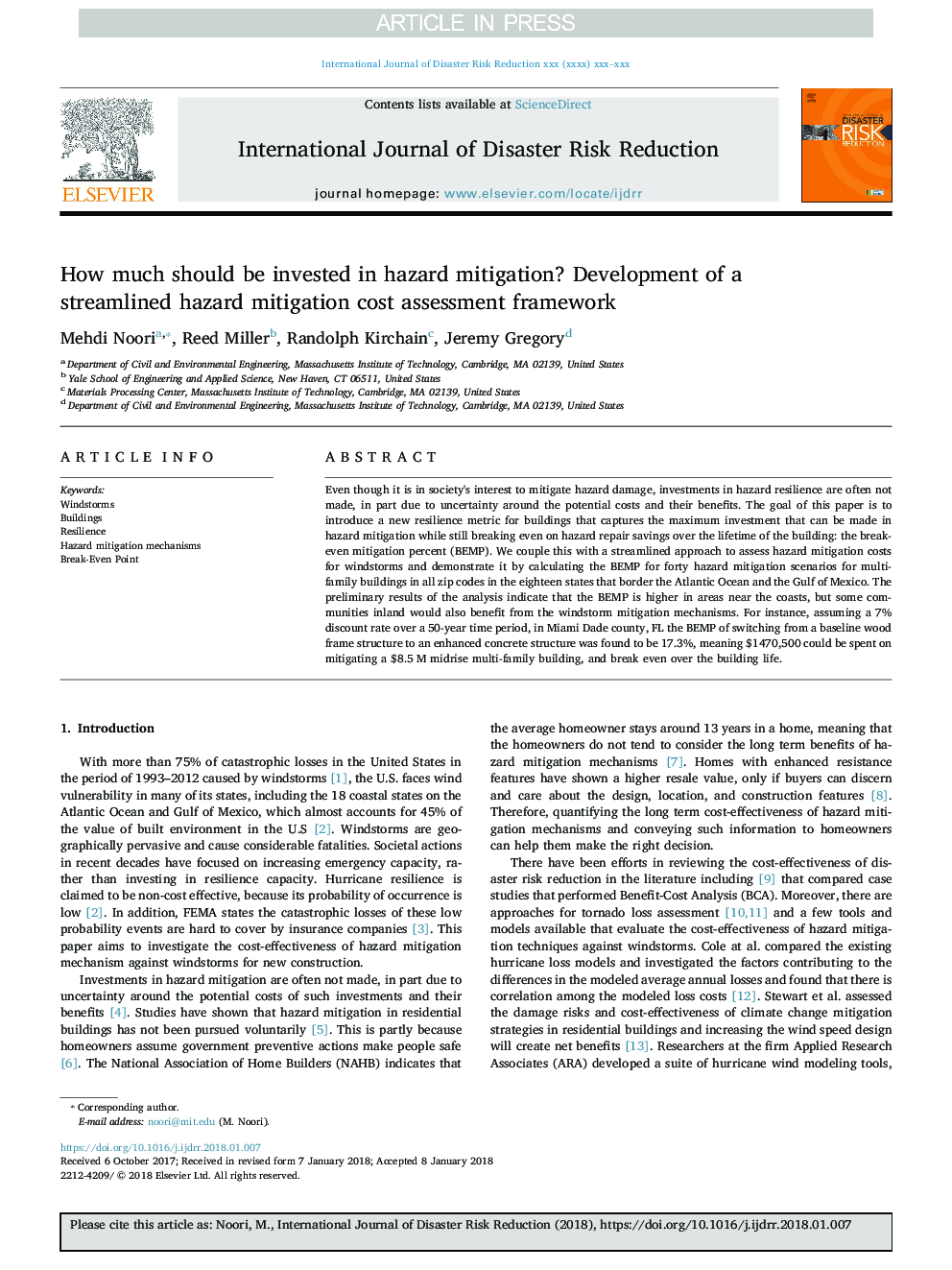| Article ID | Journal | Published Year | Pages | File Type |
|---|---|---|---|---|
| 7471702 | International Journal of Disaster Risk Reduction | 2018 | 7 Pages |
Abstract
Even though it is in society's interest to mitigate hazard damage, investments in hazard resilience are often not made, in part due to uncertainty around the potential costs and their benefits. The goal of this paper is to introduce a new resilience metric for buildings that captures the maximum investment that can be made in hazard mitigation while still breaking even on hazard repair savings over the lifetime of the building: the break-even mitigation percent (BEMP). We couple this with a streamlined approach to assess hazard mitigation costs for windstorms and demonstrate it by calculating the BEMP for forty hazard mitigation scenarios for multi-family buildings in all zip codes in the eighteen states that border the Atlantic Ocean and the Gulf of Mexico. The preliminary results of the analysis indicate that the BEMP is higher in areas near the coasts, but some communities inland would also benefit from the windstorm mitigation mechanisms. For instance, assuming a 7% discount rate over a 50-year time period, in Miami Dade county, FL the BEMP of switching from a baseline wood frame structure to an enhanced concrete structure was found to be 17.3%, meaning $1470,500 could be spent on mitigating a $8.5Â M midrise multi-family building, and break even over the building life.
Related Topics
Physical Sciences and Engineering
Earth and Planetary Sciences
Geophysics
Authors
Mehdi Noori, Reed Miller, Randolph Kirchain, Jeremy Gregory,
